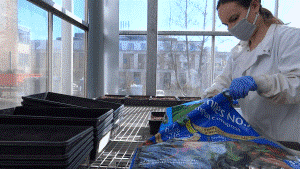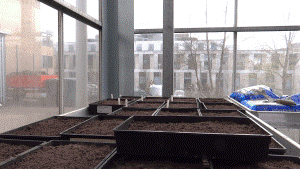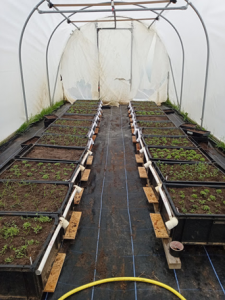Author: Helena Ripley
 My PhD research is focused on the use of cover crops to control soil erosion in hillside orchards in Spain. I am currently working on my third data chapter: a mesocosm trial to assess the effectiveness of different species and mixes to reduce soil loss under overland water flow. This blog will give an overview of the process of starting an experiment.
My PhD research is focused on the use of cover crops to control soil erosion in hillside orchards in Spain. I am currently working on my third data chapter: a mesocosm trial to assess the effectiveness of different species and mixes to reduce soil loss under overland water flow. This blog will give an overview of the process of starting an experiment.
I started planning the experiment 6 months prior to setting up the site. I looked through literature at experiments that had used similar methods to those I planned to use and thought about what I had available to use and the timeline I wanted to work in.
There were many people to communicate with as I got started, to place orders for boxes, soil and guttering, also to arrange use of a greenhouse and poly tunnel. The poly tunnel needed some repairs and several members of staff from my department helped with that. There were a few runoff boxes left over from an experiment that was carried out a few years ago but I needed more, thankfully the department has a workshop and technician to help with designing and making these.
There were enough seeds left over from previous experiments that I didn’t need to order any more. These were carefully measured so that each treatment had a similar germination rate and planted in seed trays in the greenhouse. They germinated very quickly, which is one of the reasons I chose them.

Once the runoff boxes were made and plants in the greenhouse had germinated these were all transported to the field station. The boxes were filled with soil (a job I actually really enjoyed!) and the plants were potted on. The plants seem to have taken well to their new surroundings and are thriving.

This blog was first published at: http://wp.lancs.ac.uk/sustainable-agriculture/2021/05/11/the-use-of-cover-crops-to-control-soil-erosion-in-hillside-orchards-in-spain/